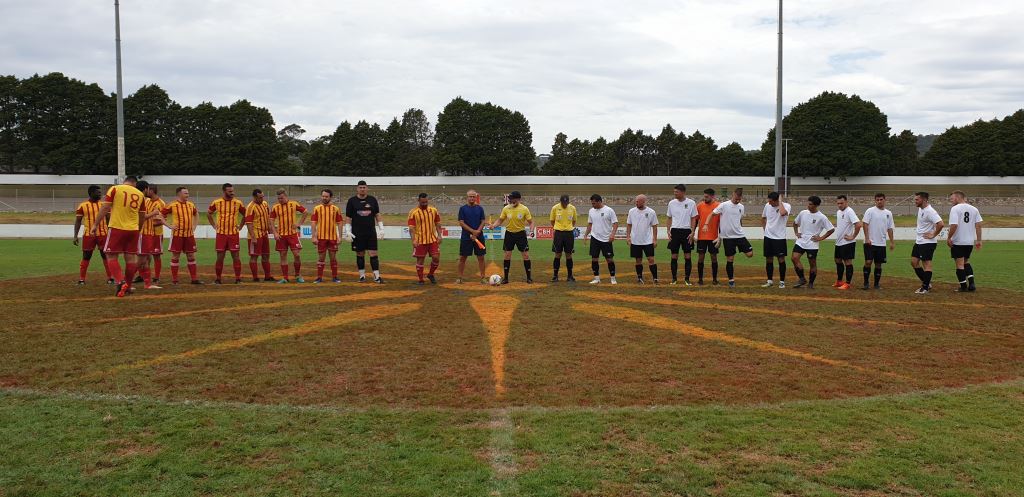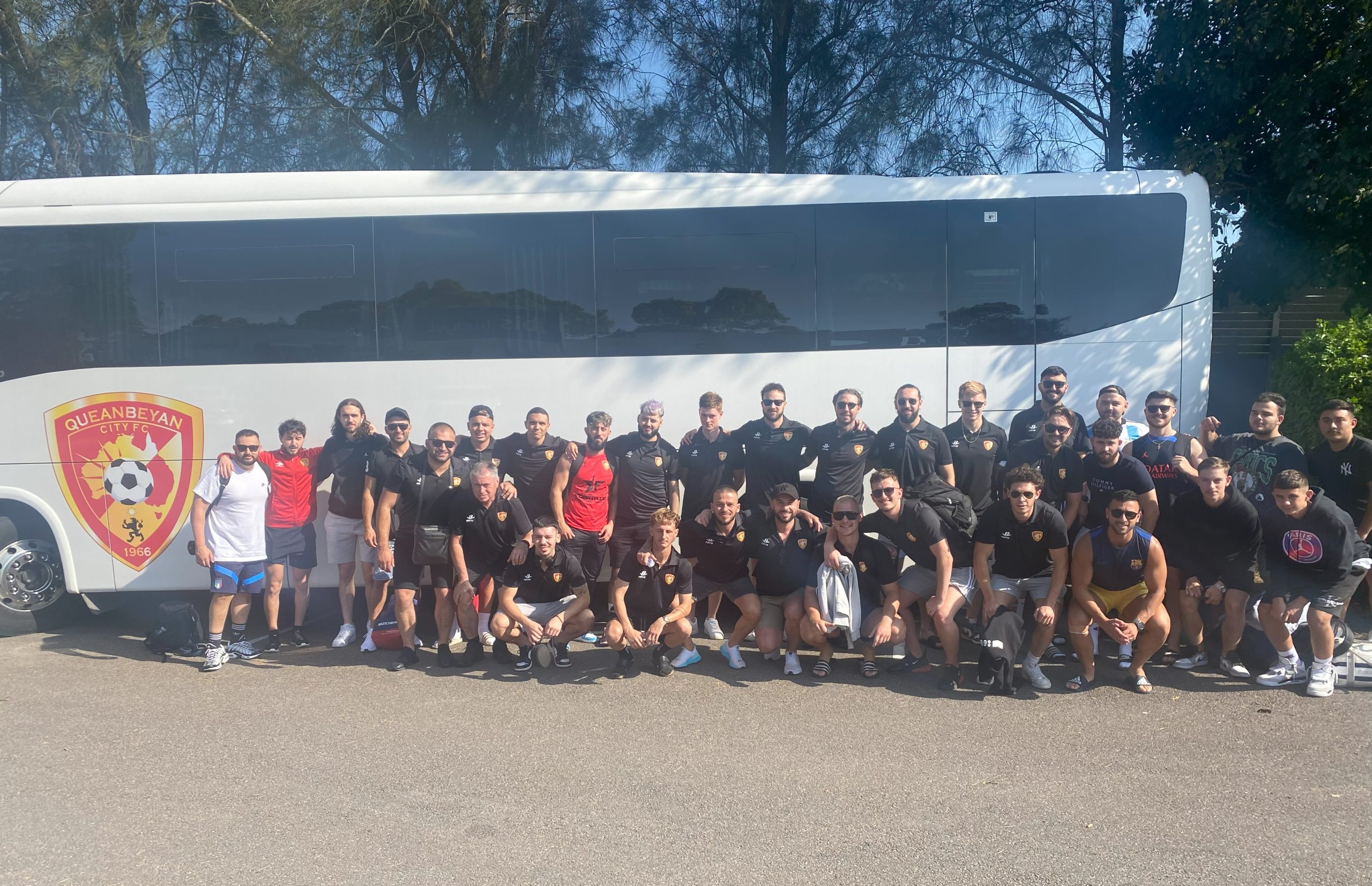Can you provide an overview of Queanbeyan City Football Club and its history? When was the club established, and what are some key milestones achieved over the years?
Macedonian immigrants officially founded the club in 1966. They were, however already playing football prior to the formal establishment of the club. They first gathered at Freebody Oval in Queanbeyan and played between themselves. In 1965 it was suggested that their football club be formed given that all the other ethnic groups had their own club.
There was a meeting organised where it was decided that the club would be called Makedonija. No other name would be as fitting as the divided homeland of Makedonija. In addition to this it was also decided that the players would purchase their own boots and would play for free. It was noted on record that a lot of the players stated, “we will play for free for Macedonia”. The right amount of money was collected to buy the team outfits thanks to the support of the community and before Christmas, the club was registered as Makedonija Soccer Club – Queanbeyan. Fast-track to today, our current head coach Goran Josifovski has represented Australia at the national level for futusal and continues to support our players and share his expertise as the club continues to grow.

QCFC Team of 1968.
Can you highlight the significance of football in the local community? How does the club engage with and support the community beyond the sport itself?
Football is massive in the local community and with Queanbeyan being a proud multicultural town, the pair go hand in hand. The club is proud to host a diverse range of players and volunteers and has created a sense of belonging for people from all walks of life. The thing that we all have in common is that we are bound by football. The club proudly originated by a group of Macedonian immigrants and works very closely with ‘KUD Razagrina Makedonia’ which is the local Macedonian dance group and the Macedonian Community Centre. The club finds that if they continue to work together, all three local organisations will thrive. From a broader perspective, the club works with local charities and supports their sponsors in their efforts.
Are there any annual club events, tournaments, or community activities organised by the club that have become traditions in the Queanbeyan region?
Queanbeyan City Football Club hosts a preseason tournament in February. This tournament is run every year and typically three clubs are invited to compete. The tournament usually runs for three weekends and involves our first grade and u23 teams. Each team plays the other clubs in a round robin style format. Typically, the ACT fields are closed during this period so for ACT clubs to have the opportunity to travel a short distance and compete in a high-quality tournament is great. The Tournament is also a great opportunity to raise money for our Non-For-Profit organisation. The canteen, thanks to our volunteers is open for the entire day irrespective of which teams are playing.
How does Queanbeyan City Football Club engage with local schools, businesses, or other organisations to strengthen ties and promote the sport?
Queanbeyan City Football Club participates in multiple events to promote football and especially our club. This year we participated jointly with the local Macedonian dance group ‘KUD Razigrana Makedonka’ in the Multicultural festival, promoting our culture and our respective clubs together.
On two occasions we also used our club as a platform to raise money for two different charities. On one particular occasion we chose the local business SleepBus, a local charity that provides an opportunity for people to seek shelter for the night.
What programs or initiatives does Queanbeyan City Football Club have in place to promote youth development and participation in football?
The club currently has two youth programs which include our Miniroos program as well as our junior league program. Most of our first-grade players are local Queanbeyan men who have come through the club’s junior ranks, a tradition we would like to continue. Also to note, the club is proud to offer registrations at an affordable price as we are a firm believer that all kids should have access to football irrespective of their financial position.
This year we are also proud of the creation of a new organisation to the Queanbeyan City brand which is the Phalanx Academy. The Phalanx Academy is open to the broader community but specialises in recognising our talented youth and providing them an opportunity to further develop their football skills, as well as their interpersonal skills such as respect and discipline.
Are there any notable success stories of players who have come through the ranks of Queanbeyan City Football Club and gone on to achieve success at higher levels?
There are a few notable clubmen to be recognised. They include Velice Trajanoski, who not only played for the club but developed into a club president. He later went on to work in local politics where he was a councilman in our local region. A story not so dissimilar is one of Steve Taskovski. Steve was both a player and committee member and is currently serving as a council man in our local region.
Other notable clubmen include Steve Peios, who currently works as a ring announcer, podcaster, presenter, commentator and recently worked at the Fifa World cup as an official announcer. Lastly, Ilce Prenzoski played a number of seasons at Queanbeyan City Football club before representing Canberra at a State level with the Canberra Cosmos.



How does the club foster a sense of camaraderie and sportsmanship among its players and members?
Queanbeyan City are very proud to boast an incredible story of their origins dating back almost 60 years. This story is about a bunch of trailblazers looking to make their mark among the Queanbeyan Community and build the best team in Canberra. We often give lessons to our players and show them photos from the founding fathers of the club to emphasise why the club is so important and how much it means to the Queanbeyan community.
Many players have had relatives such as fathers and uncles play for the club which has helped to build that sense of pride and willingness to win and fight for the club. The current group of players are buoyed by a very vocal and big supporter base, who attend games from all grades no matter the place or the weather. Coupled with the committee and volunteers, everyone involved at the club is proud to don the famous red and yellow.
Can you highlight any memorable moments or matches in the club’s history that have had a significant impact on the Queanbeyan community?
In 1966 a team bus was donated to the club by Angelo Hazelis. Then, in the 1970s, Queanbeyan City Football Club went on to win its first titles with two-second division league premierships in 1973 and 1978, as well as the 1978 finals championship. In 2006, the club were premiers and were promoted to the Canberra first division. In February 2016, Queanbeyan City Club celebrated its fifty-year anniversary with a gala night as Queanbeyan’s longest running football club.
In 2018, the club were premiers, however due to certain federation state requirements they were unfortunately not promoted. In 2019, the club held the annual Macedonian cup which saw teams from all over the country compete in a football tournament. This tournament was considered by many to be one of the best tournaments ever hosted. Finally, in 2020, the current Club President replicated 1966 efforts and donated a team bus for Queanbeyan City’s use.
Are there any partnerships or sponsorships that the club has established with local businesses or organisations? How do these collaborations benefit both parties?
Part of the club’s recent growth is due to its partnerships with local businesses. We have a range of sponsors from a variety of business sectors. Many of our partnerships are with Queanbeyan institutions including Walsh’s Hotel, EMU Energy, Village Building Co., Malaganis Edwards Johnson and OneStop Shop.
The growth of Queanbeyan City Football is largely due to the support that we receive from the community. Without community support, there is no Queanbeyan City Football Club.
We also lend a helping hand where we can to support those who support us. For example, we advertise at our local ground, High Street using social media as a platform to help generate business and give back to our sponsors. This also involves attending Walsh’s Hotel after every away game.
What are the future plans and goals of Queanbeyan City Football Club? Are there any upcoming projects or initiatives that will further enhance the club’s presence and impact?
We aim to build the club from the grassroots up and establish ourselves as one of Canberra’s powerhouse clubs. The Juniors are an integral part of our blueprint for success, they are driven by the incentive to one day play for first grade and proudly represent the club. This starts at Miniroos and we aim to field a side in every age group for both boys and girls with the ultimate goal of creating future Queanbeyan City first grade stars. Some projects that are currently in the pipeline include the drafting of a strategic plan that will give transparency of how the club aims to succeed moving forward. This will include the appointment of an official technical director.
We are also working with the Queanbeyan-Palerang Council to help establish the new South Jerrabomberra Sporting Complex. This complex will give our club top-shelf facilities for both training and game day. The Queanbeyan City Football Club is also invested in improving our current home ground at High Street. This is inclusive of better training equipment, enhanced game day experince and decorating the field in team colours.

QCFC Team of 2023.



